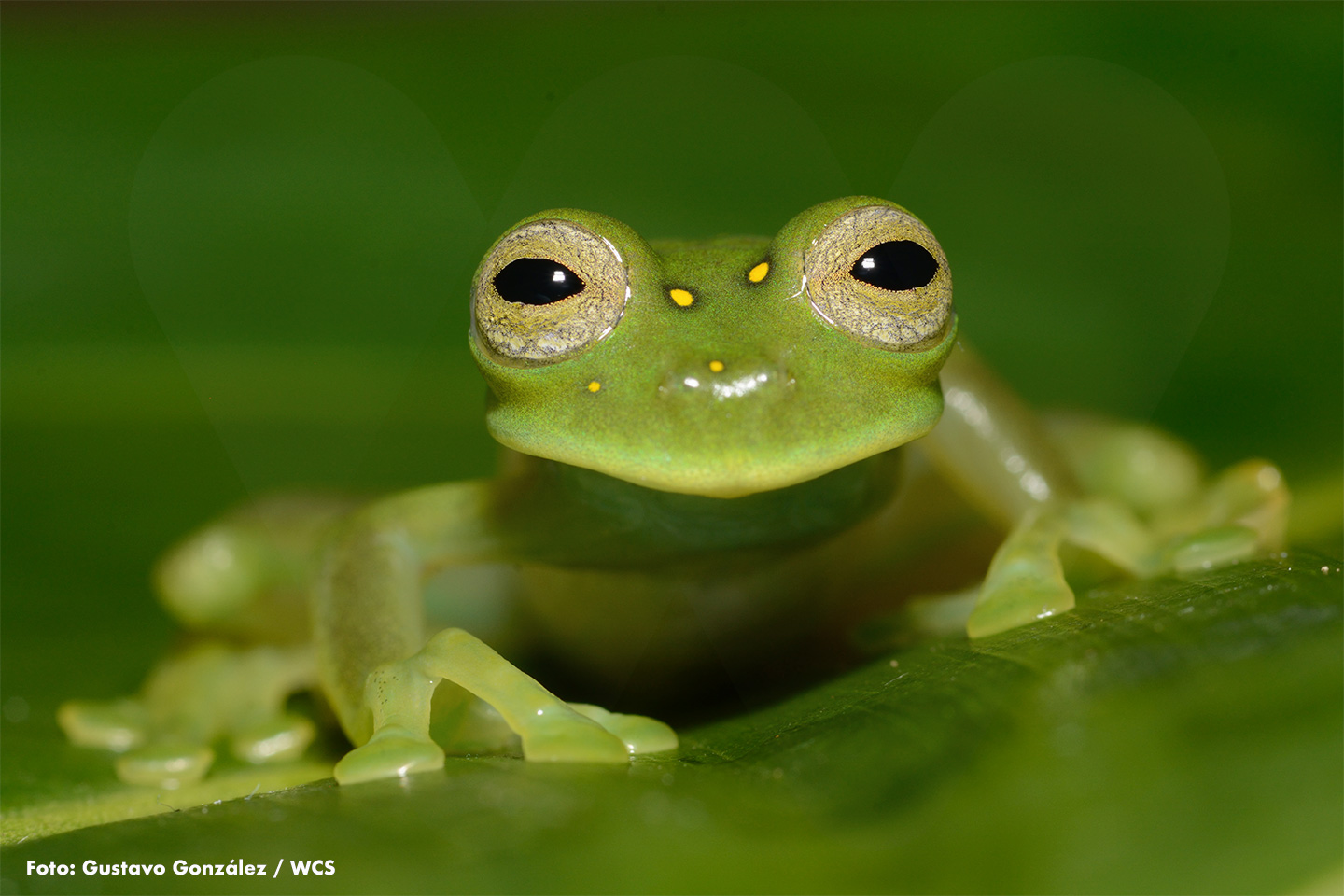 Nymphargus luteopunctatus
Nymphargus luteopunctatus
It is found in the Munchique National Natural Park. It is a very rare species, classified by the International Union for Conservation of Nature (IUCN) as Endangered. Its name is attributed to the yellow dots, like eyespots, that it has on its body. It lives near streams, where it reproduces, and also in well conserved forests.
 Sachatamia orejuela
Sachatamia orejuela
It can be seen in the Munchique (Cauca) and Farallones de Cali (Valle) National Natural Parks. It lives in well conserved forests and also in rocky places in rivers, where it uses the cracks of the rocks to slip away. From these places, it actively sings, to attract females or warn other males of its presence.
 Nymphargus grifithsi
Nymphargus grifithsi
It protects itself in well conserved forests and in small creeks, where it can climb to the tree tops and actively sing to attract females. Not much is known of its ecology. It is usually found in Munchique (Cauca), Tatamá (Chocó-Risaralda-Valle) and Farallones de Cali (Valle) National Natural Parks.
 Nymphargus rosada
Nymphargus rosada
This is a relatively common species, pink or orange in color. Nonetheless, it was included in the Vulnerable category by the International Union for Conservation of Nature (IUCN). Its habitat is highly fragmented. Its refuge is the Selva de Florencia (Caldas) National Natural Park. It actively sings near streams to attract mates.
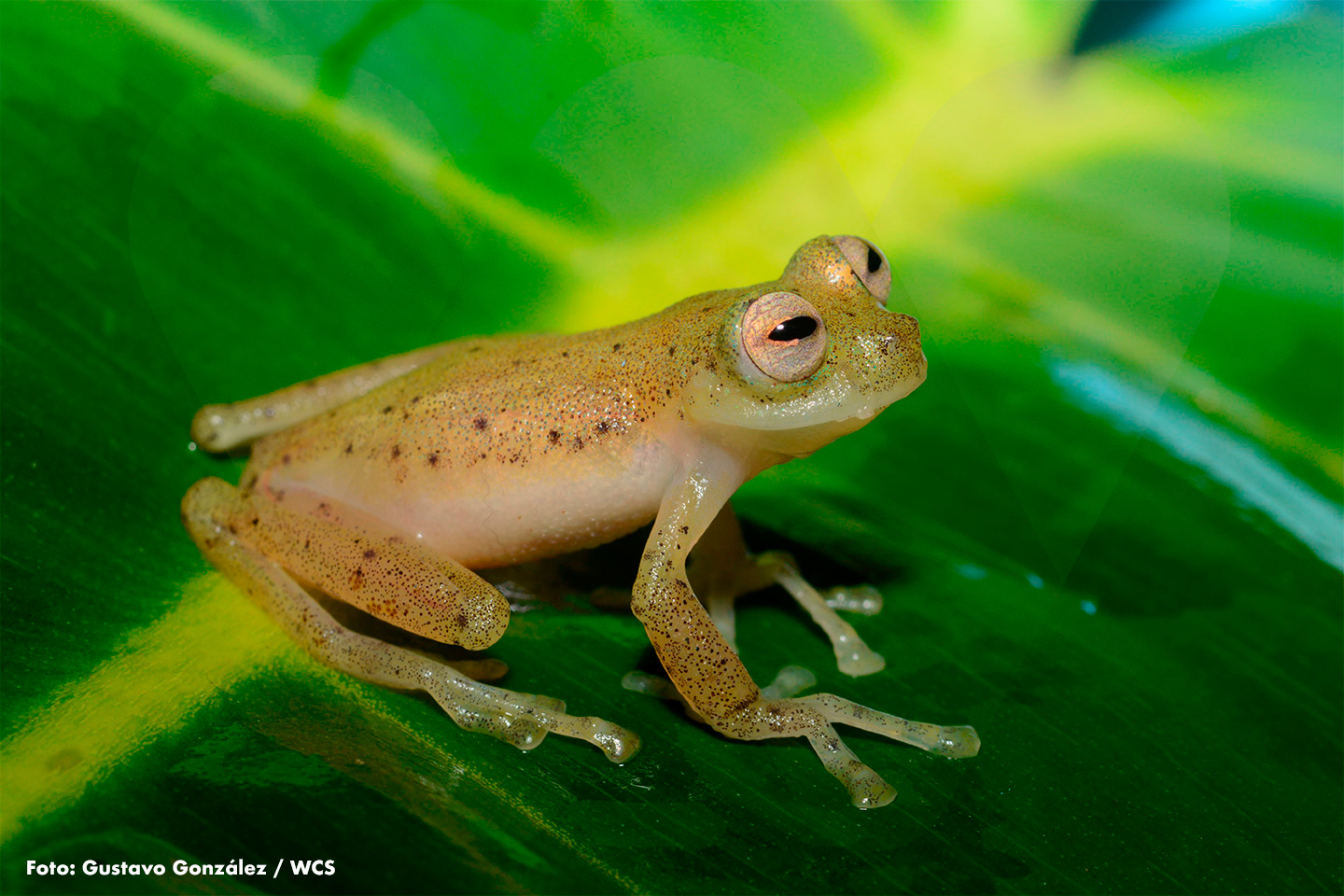 Nymphargus caucanus
Nymphargus caucanus
Its color is light olive and it lives in streams, where it reproduces, and in well conserved forests. As per the International Union for Conservation of Nature (IUCN), it is Endangered. It is found in the Munchique (Cauca) National Natural Park.
 Nymphargus grandisonae
Nymphargus grandisonae
It is a common species, visible between Colombia and Ecuador. It is easily identifiable by the few red dots on its back. This species can be found in intervened areas or in mature forests, near the water. One of its characteristics is that the males fight for their territory. In their combats, they use the humeral spines they have on their arms to hurt their opponents.
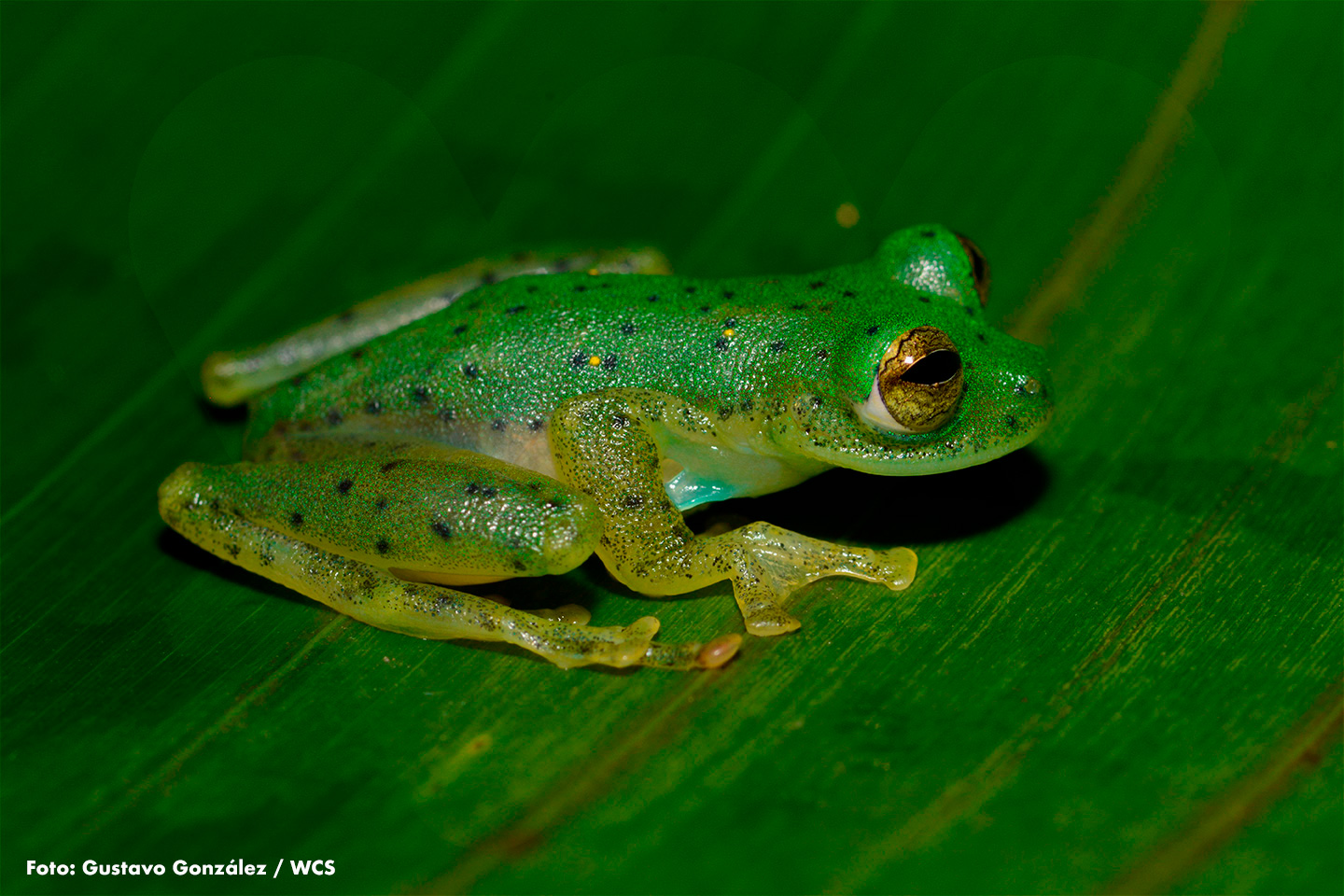 Espadarana prosoblepon
Espadarana prosoblepon
Observing its ventral side, some green bones can be seen. It can have yellow dots or blue dots. It is a species distributed in different parts of Colombia, mainly in inter-Andean valleys and the Pacific. It has a humeral hook with which males fight to defend their territory.
 Espadarana andina
Espadarana andina
It usually lives in the Eastern Mountain Range of Colombia. It has green bones and blue dots on its back. The same as the previous one, males have a humeral hook on their arms with which they fight to defend their territory. It is found in the Sanctuary of Fauna and Flora Guanentá Alto Río Fonce (Boyacá - Santander).
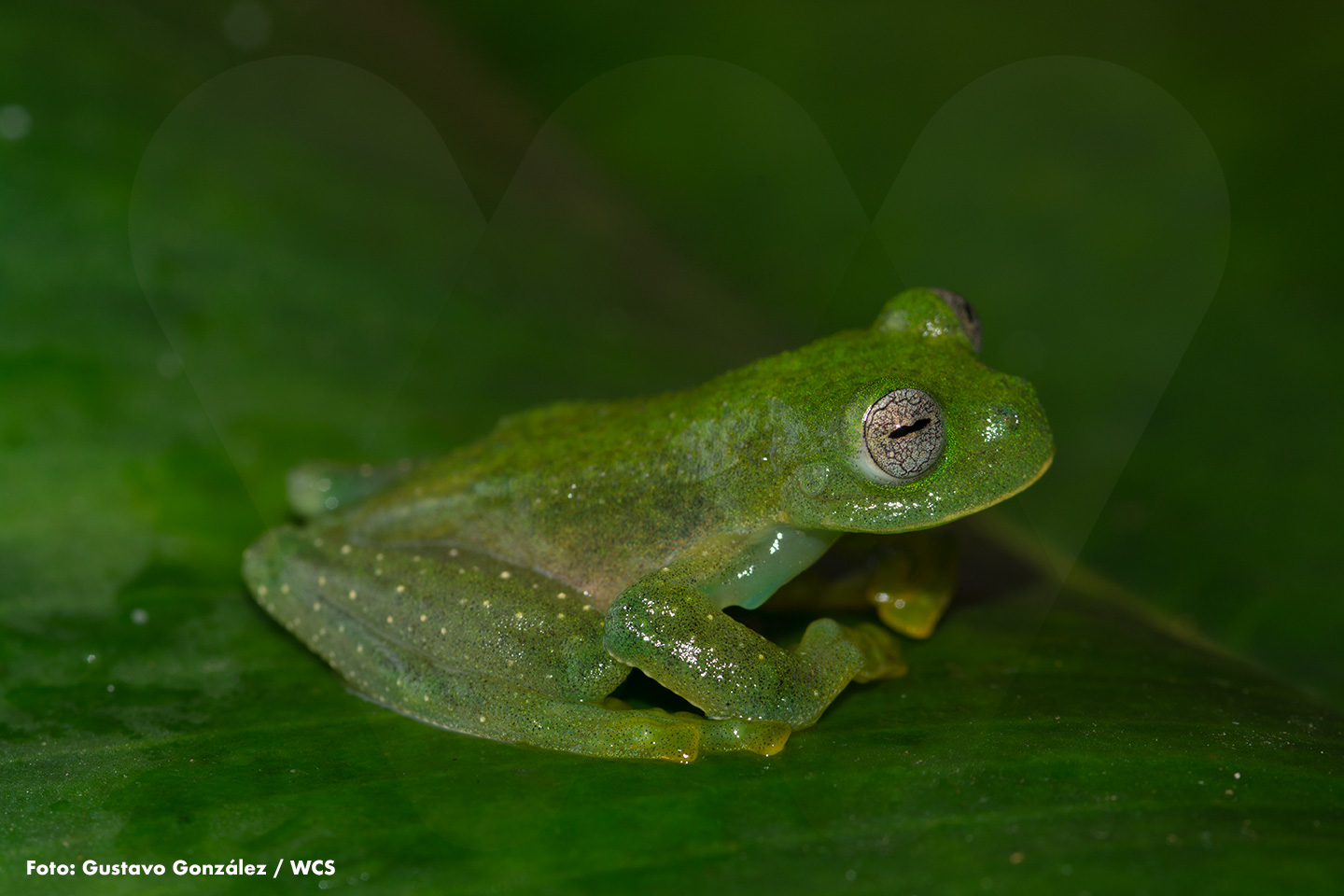 Centrolene hybrida
Centrolene hybrida
It lives on the hillsides of the Eastern Mountain Range and on the Orinoquía piedmont, especially in the Chingaza National Natural Park. It usually remains in well preserved sites. Males have spines on their arms that they use to dispute their territory. Not much is known on their ecology.
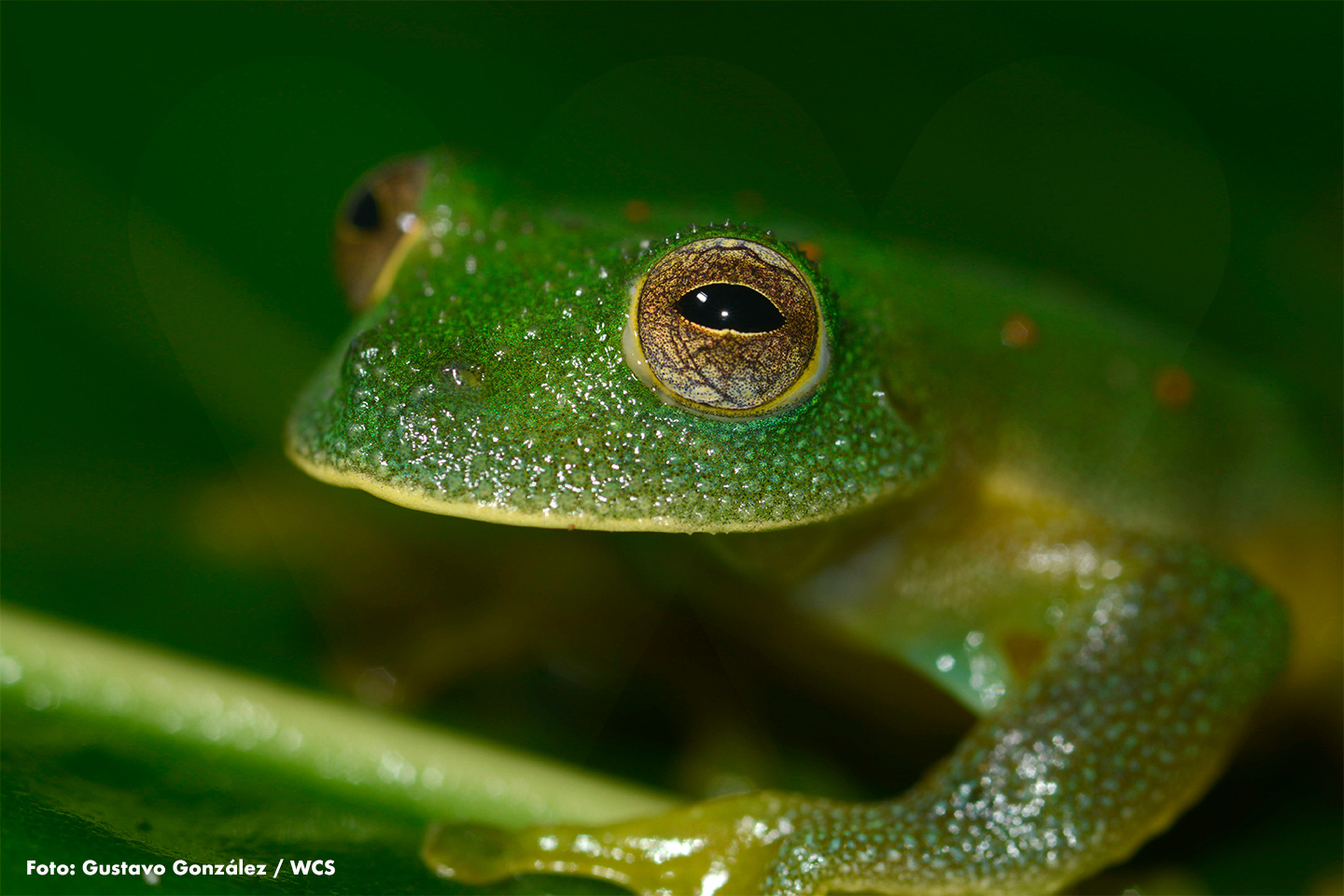 Centrolene acanthidiocephalum
Centrolene acanthidiocephalum
An extremely rare species, visible in the Sanctuary of Fauna and Flora Guanentá Alto Río Fonce (Boyacá - Santander). As per the International Union for Conservation of Nature (IUCN), the species is Data Deficient. Its name refers to its head that has the form of a shovel.